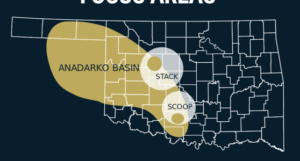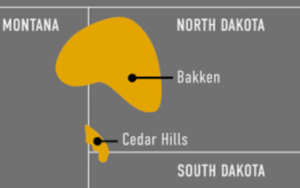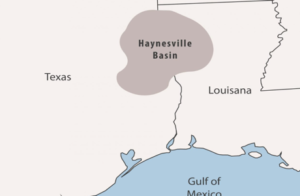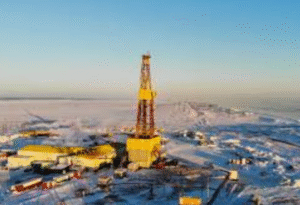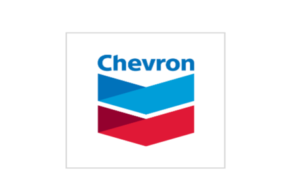Texas’s Midland Basin, part of the larger Permian Basin, which spans parts of western Texas and eastern New Mexico, is made up of many stacked hydrocarbon-bearing formations. Production increases from the Permian Basin (particularly the Midland Basin) contributed to record U.S. crude oil and natural gas production in 2019. In 2021, as the industry continues to work through issues related to reduced consumption due to the COVID-19 pandemic, natural gas production has returned to average levels faster than crude oil production because of rising natural gas prices and more demand to support U.S. exports from the region.

The Midland Basin is in the eastern Permian Basin and is within Texas’s borders. During the last decade, hydrocarbon exploration and production in the Midland Basin were driven by development of the organic-rich, lower permeability units within the Wolfcamp and Spraberry formations. Reservoirs of the basin have been a target for vertical drilling since the 1940s, and vertical drilling generated most of the basin’s production until the mid-2010s. As a result of technological advances in horizontal drilling and hydraulic fracturing, shale intervals of the Spraberry and Wolfcamp formations became the main targets for exploration and production. Production from vintage vertical wells, many of which access the Spraberry and Wolfcamp formations, accounted for about 6% of total hydrocarbons produced from the Midland Basin in 2020. The Midland Basin generated 1.68 million barrels per day (b/d) of crude oil and 5.4 billion cubic feet per day (Bcf/d) of dry natural gas in 2020, accounting for about 15% of total crude oil production and about 6% of total dry natural gas production in the United States, according to Enverus Inc.

In 2020, as economic conditions and other factors related to the COVID-19 pandemic caused domestic crude oil prices to fall to their lowest levels in years, operators in the Midland Basin used financial, operational, and technological mechanisms to maintain production under challenging market conditions. Crude oil and natural gas production across Texas also reached temporary lows in February 2021 because of a cold snap that caused electricity outages across the state.
Report – Spaberry Wells Spud 2021
Top 10 Operators Wells Spud 2021 Spraberry

Midland Basin production reached a low of 3.8 million b/d of crude oil and 4.9 Bcf/d of dry natural gas in May 2020, but production has since increased. In January 2021, the Midland Basin generated 1.6 million b/d of crude oil, which was 5% more than its May 2020 low but 10% less than its monthly peak reached in February 2020. By comparison, Midland natural gas production peaked in late 2020 and reached an all-time high of 5.8 Bcf/d in October 2020, when new pipeline takeaway capacity out of the Permian Basin entered service.
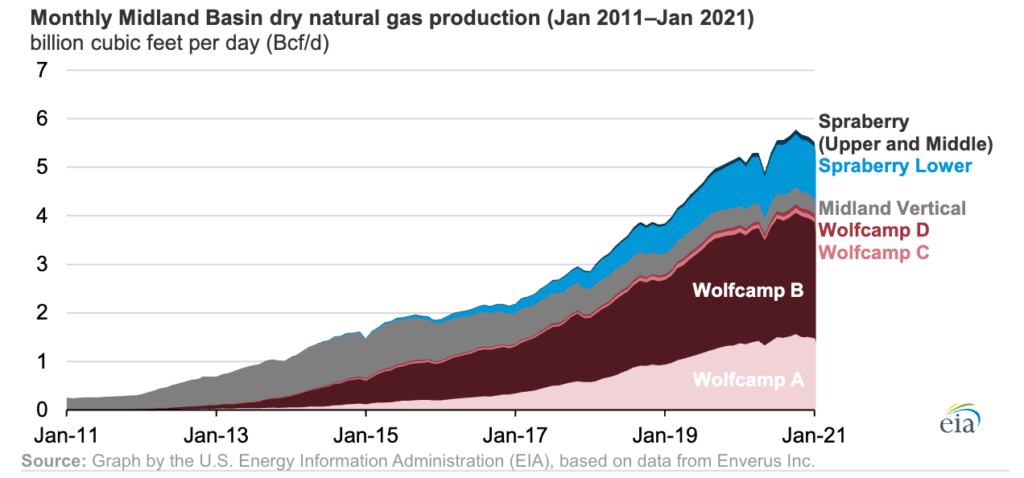
At the end of July 2021, 107 drilling rigs and 28 fracking crews operated in the Midland Basin, according to Enverus Inc. At that time, the Midland Basin accounted for 44% of all rigs operating in the Permian Basin and 22% of all rigs operating in the United States. The Midland Basin’s rig count fell to as low as 58 active rigs last summer, when low crude oil prices led to drastic reductions in drilling operations.
Pipelines in the Sparberry
T4 Pipeline Permits
Navitas provides a full slate of midstream gas services, including gathering, treating (dehydration, carbon dioxide and nitrogen), gas processing, and pipeline transportation of natural gas, natural gas liquids and condensate.
Navitas, according to the company website has 1600 miles of natural gas gathering pipelines as well as processing facilities. GLASSCOCK, HOWARD, MARTIN, MIDLAND, REAGAN
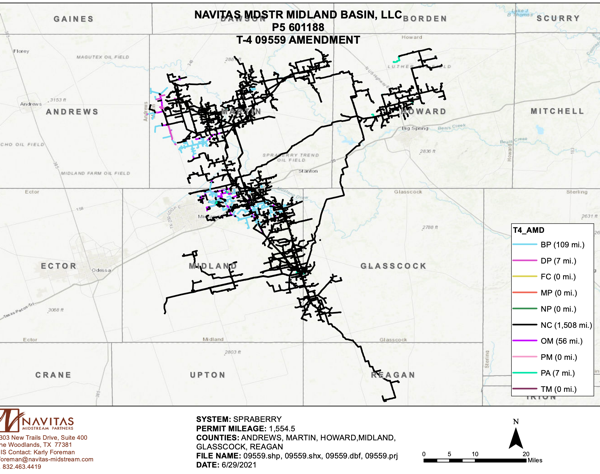
Cogent’s assets in the Midland Basin include more than 796 miles of pipeline in operation and five active natural gas processing plants. Current services include low-pressure gas gathering, compression and processing; crude oil gathering by pipeline and third-party condensate stabilization. Natural gas processing capacity available totals 520,000 Mcf/d. Crude oil gathering system capacity is 80,000 barrels per day.
In November 2019, Cogent began operations at a second 200,000 Mcf/d processing plant at the Big Lake Processing Complex in Reagan County. The refrigerated, cryogenic plant serves growing production from the Wolfcamp formation. The high-efficiency UOP Russell plant is capable of high recovery rates for natural gas liquids including ethane and propane. See a photo gallery of construction of the plant below.
In April 2019, Cogent announced plans to construct an approximately 25-mile pipeline to deliver residue gas from the Big Lake complex to Kinder Morgan’s Gulf Coast Express Pipeline (GCX Pipeline). The pipeline, which came into service in November 2019, has a total capacity of approximately 400 million cubic feet per day (MMcf/d) and is expected to also cross the proposed Permian Highway Pipeline and Whistler Pipeline projects.
Cogent’s systems serve Coke, Crockett, Glassock, Irion, Mitchell, Reagan, Schleicher, Sterling, Tom Green and Upton counties. We are honored that our customers represent many of the most active drillers in the Permian.
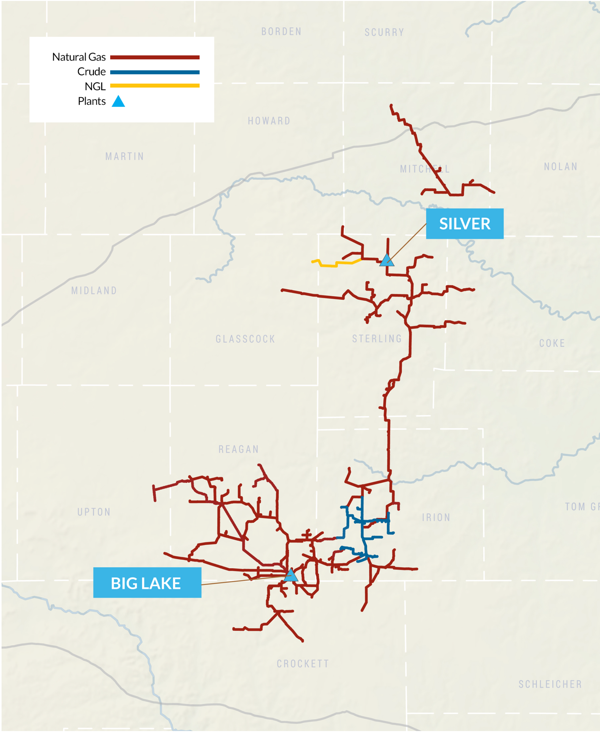
Oil and Gas Permit Reports
Energy News



